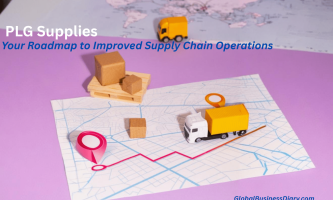Work Anywhere: The Benefits Of A Portable Office For Remote Professionals

In recent years, people have shown interest in office cubicles where they could get the freedom to work with complete freedom that remote work offers.
No longer tethered to a single location, these mobile professionals can take their jobs with them wherever they go. But working from home or a coffee shop isn’t always ideal—the distractions of family, noise, and lack of privacy can make productivity a challenge. That’s where portable offices come in. People are searching for the benefits of a portable office.
What Are Portable Offices?
A portable office is exactly an office space that is mobile in nature, and one can easily move it from one place to another. These modular buildings are constructed off-site, transported, and assembled at the desired location. While traditional construction is permanent, portable, or mobile offices offer ultimate flexibility.
Inside portable offices, you have all the facilities of a regular office. There, you will get climate control, lighting, electrical wiring, and other facilities that will support your work. The structures are built to be sturdy and secure, able to withstand the elements and relocation. Outside, their simple designs allow them to blend into most environments.
The Many Benefits Of A Portable Office Or A Private, Quiet Workspace

One of the biggest benefits of having this office is creating a professional space that is free from the distractions of the workspace. Whether in your backyard, on a rural plot of land, or in an off-site work location, a portable office provides quiet privacy that a public space or home office simply can’t match.
As more people have shifted to remote roles, many have discovered the challenges of working from home. Barking dogs, ringing doorbells, crying babies, and loud neighbors are the disruptions that can heavily impact your productivity and focus. In a portable office, you can finally close the door and immerse yourself fully in your work.
Increased Productivity And Job Satisfaction
It’s easy to feel a lack of energy and motivation when your office is a corner of the living room or a noisy cafe. A dedicated space designed particularly for work can elevate your productivity to quite an extent.
Moreover, with a professional mindset, you clock in each day. Numerous studies have shown that designated workspaces boost productivity, performance, and job satisfaction for remote employees. When you can leave the distractions of home behind and go to the office every morning, you’re better able to concentrate and get more done.
Separation Of Work And Home Life
In addition to improving productivity, keeping work and home life separate is vital for personal well-being. When you’re looking to work and live in the same space, things become busy, and the challenges become quite blurred… You know, we are talking about ease. You may be unable to ‘shut off’ from work mode or let home responsibilities constantly interrupt your working hours.
A portable office creates a clear boundary between your professional and personal lives. You can go to your office to be productive, then return home and leave work behind at the end of the day. This separation helps prevent burnout and allows you to be more present with family and loved ones.
Affordable Alternative To Traditional Construction
Portable offices provide an affordable solution compared to permanent construction for those needing workspace flexibility. Since the units are prefabricated off-site, the construction process is far more cost-effective and efficient. It is the benefit of a portable office. Traditional office builds involve months or years of planning, labor, materials, and other expenses that quickly add up.
Portable offices can often be installed in a matter of days or weeks at just a fraction of the cost. Their modular nature also makes them easy to expand, downsize, or relocate as your space needs change over time.
Endless Versatility And Customization
Whether you need a single private office or space for an entire mobile workforce, portable offices can adapt to your unique needs. Units come in a wide variety of sizes and can be outfitted with everything from basic furniture and technology packages to high-end luxury finishes.
Clearly, the benefits of a portable office are wide customization. Multiple units can be combined to create custom floor plans, complete with meeting spaces, break rooms, or whatever your company requires. And if your team outgrows the initial office space, more modules can simply be added on.
Eco-Friendly And LEED-Certified Options
As more businesses prioritize sustainability, many are looking for green options that reduce their carbon footprint. Portable offices allow you to go green while avoiding wasteful traditional construction practices.
Many portable office companies offer eco-friendly building materials, as well as options for maximizing energy efficiency with LEED-certified units. Solar power packages and living/green roofs further minimize environmental impact.
For remote professionals looking to ‘go portable,’ the advantages are clear: improved work-life balance, increased productivity, and a professional environment to operate your business from virtually anywhere. All without the hassles and expenses of traditional construction.
Cost-Effective: Key Benefits Of A Portable Office
Cost has always been a great factor in office arrangements and maintenance, which is also why we need to measure the impact of remote work on energy consumption. Now, you already know how costly it is to buy office property. At the same time, you also need to understand the diverse requirements attached to it.
Ultimately, it is becoming increasingly difficult to manage. Even if you go out to hire one, it will be costly. But with the help of the right portable office solution, you could evade the rising cost.
Choosing The Right Portable Office Solution: Selecting A Unit Size

The first step in getting a portable office is determining the ideal size for your space needs. Units range from small 8×10 models perfect for a private office to multi-unit complexes that can house an entire company’s workforce.
When selecting a size, consider both your current and potential future needs. A unit that is too small will quickly become cramped and outgrown, while an overly large one wastes money on unnecessary space.
Many modular office companies can help analyze your specifications to recommend appropriate sizes. Consider the right benefits of a portable office before making a selection.
Basic Or Fully Customized Design?
Once you’ve settled on size, the next step is to determine how much customization you would like in your portable office — both in the design and layout. Basic models come with standard finishes and minimal bells and whistles, while customized units allow you to create a truly personalized workspace, like in portable office trailers. Focus on the benefits of a portable office.
For individual professionals or smaller teams, a basic setup may suffice. However, larger groups and businesses will likely want things like custom floor plans, furniture installations, technology packages, and more. The beauty of the modular design is the wide range of options to craft your ideal office.
Short-Term Or Long-Term Solution?
Another key element of consideration is whether you would like your portable office for both a short-term and long-term solution. Some situations only require temporary extra workspace, while others need a more permanent resolution.
Most portable offices can work for either scenario. Short-term leases allow you to rent units for days, months, or years as needed. For longer commitments, purchasing portable offices outright is often the most cost-effective route.
Setting Up Your Portable Office Site Prep And Permitting
Once you’ve selected your desired portable office, the next step is determining where to locate it and handling any necessary site preparation or permit requirements. An experienced portable office company can guide you through this entire process.
Site prep may involve pouring a simple foundation, adding ramps or stairs, or other modifications to make the location office-ready. Permits will depend on your area’s local rules and zoning regulations for hosting a portable office space.
Installation And Setup
From there, it’s simply a matter of having the portable office transported and installed at your desired location. For temporary needs, units can usually be dropped off and set up in a single day. Longer-term or customized installations may take a bit more time.
Portable office companies will handle all delivery and setup. You have to keep the benefits of a portable office in mind when considering the installation and setup. They’ll ensure the unit is level, securely anchored if needed, connected to power/utilities, and move-in ready. Any custom add-ons like ramps, stairs, skirting, and more will be installed during this phase as well.
The Portable Office Life
Once your portable office is installed, you can start enjoying a distraction-free, customized workspace tailored to your needs. Whether used as a temporary modular office space or permanent home base, these flexible units allow you to create an ideal professional environment anywhere.
Conclusion
No more noise and chaos – just step into your private portable oasis and immerse yourself in productive work. For today’s remote professionals, who prioritize location independence, modular offices offer the freedom to build their ideal office atmosphere wherever life takes them. We hope you have got an idea regarding a portable office.
Read Also:













